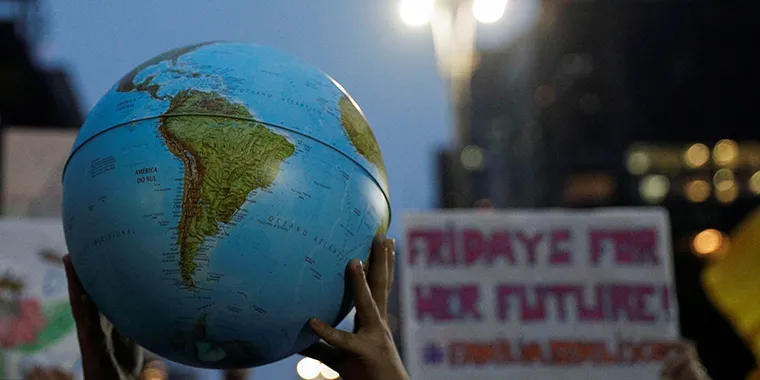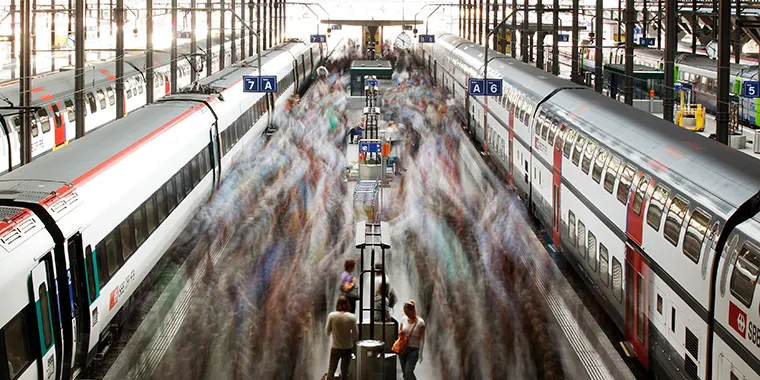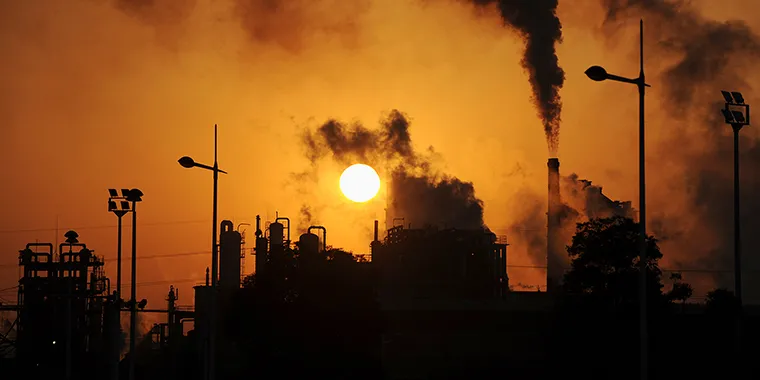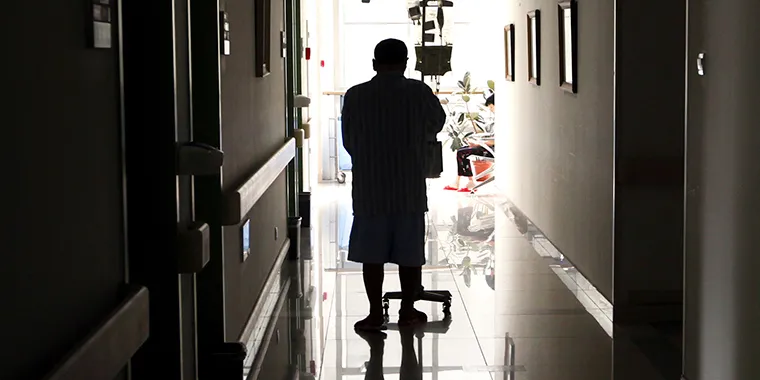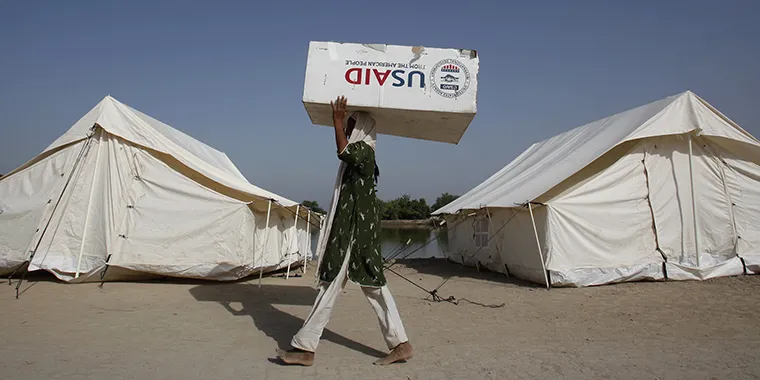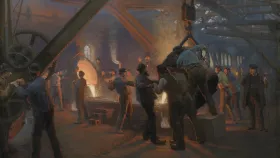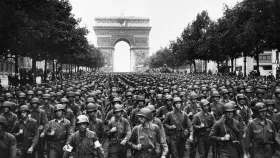Eleven Global Issues That Will Shape the Future
Understand the challenges that will define our lifetime.
Teaching Resources—Global Era: Introduction (including lesson plan with slides)
Higher Education Discussion Guide
Picture this: You’re scrolling through Instagram when your curiosity is piqued by an interesting post. In your hands, you see an infographic exploring the relationship between climate change and immigration. Three hours later, you emerge from an internet rabbit hole. Now, you are more confused than ever. How can the world’s most significant issues overlap and why do they matter?
Sound familiar?
You’re not alone in feeling overwhelmed. The world is mind-bogglingly complex. But as we wrap up our journey through the history books and finish exploring how our intricately connected world came to be, one overarching idea should be coming into focus: what happens in one part of the world, one way or another, can affect us all.
You’ll find this idea animated in the lesson below. Each section takes a curated look through the global issues that define our modern lives. These issues are historically relevant and will likely continue to define them in the future. Getting a handle on these fundamental challenges and how they connect to each other now is critical. Understanding these global issues will prepare you to understand and participate in that future.
If any (or all) of these ideas fascinate you, please read the excerpts from a longer module below. We hope you enjoy your fall down the rabbit hole to learn more.
Globalization
Most of what we interact with comes to us via a different part of the world. But globalization is about more than just access to a wider world of people, goods, and ideas—it’s at the root of some of the biggest challenges we face. The COVID-19 pandemic spread so quickly because of globalization. Globalization also facilitates the same international travel system that makes it possible to catch a flight to just about every country on earth 24/7 and the 2008 financial crisis was worsened because of interlinked finance systems. However, these same systems enable Americans to buy cheap prescription drugs manufactured in India and import avocados from Mexico. From global pandemics and climate change to automation and inequality, understanding the relationship between our most pressing issues of today and globalization is essential. In fact, such knowledge is required for successfully navigating our interconnected world. This video lesson breaks down the challenges that governments face from globalization. World leaders are constantly trying to balance the benefits and drawbacks of this defining force of interconnectedness in our lives.
Terrorism
In recent decades, many acts of international terrorism can be attributed to Islamist extremism. However, the term “terrorism” first surfaced during the French Revolution and the practice has been around much longer than that. Terrorism is one of those words that’s so widely used that a proper definition can be hard to nail down. In many cases, instances of terrorism are often conflated with other forms of violence– and vice versa. Understanding what terrorism refers to—and how that definition has changed over time—is vitally important in order to offer solutions. Counterterrorism policies enacted in the name of national security affect a wide range of issues, from immigration policy to information privacy. This video lesson explores the diverse political agendas that have motivated individuals and groups to perform violence throughout history. As you watch, please consider what tools governments around the world employ to stop terrorism.
Nuclear Proliferation
A nuclear war could end human civilization in an instant. This stark reality is why nonproliferation, or stopping the spread of nuclear weapons and the means to deliver them, is a top priority for world leaders. Since the United States detonated the first nuclear weapons in 1945, and as more governments began to stockpile these weapons thereafter, treaties designed to stop their spread, such as the Nuclear Nonproliferation Treaty (NPT), have gained steam. Even though 191 countries are now signatories of the NPT, the dangers of nuclear war persist. As countries like Iran and North Korea continue to develop their own bombs, the safety of humankind remains threatened. This video lesson explores how nuclear weapons are developed, the effect of nonproliferation treaties on our daily lives, and how world leaders attempt to prevent nuclear technology from ending up in the wrong hands.
Climate Change
Our world is getting warmer and this change in climate is already disrupting the lives of people around the globe. Moving forward, there will be fewer places where people can safely live and make a stable living. Most people have moved past questioning whether global warming exists because the science is clear: climate change already has led to more natural disasters, more migration, and more loss of life. However, world leaders struggle to gain consensus on how to address this existential challenge. Global efforts to mitigate climate change, such as the 2015 Paris Agreement, are a promising start. But the world needs to take drastic action to avoid a future defined by the far-reaching and varied effects of a warmer planet. Rising sea levels, deeper droughts, bigger wildfires and more intense storms all pose unique threats to the wellbeing of people across the globe. This video lesson unpacks why the climate is changing and what strategies exist to mitigate its effects. As you watch, please keep in mind what humans must do to adapt to the new normal it presents.
Migration
Today, over 250 million people (roughly one out of every thirty people on the planet) live in a country in which they were not born. Why do so many leave home? Typically, a mix of push and pull factors drive someone’s decision to migrate. For example, conflict often pushes people from their homes. Meanwhile economic opportunity pulls people across borders. Though the decision to leave home is personal, governments get to decide who is allowed to enter and stay in their countries. They often make distinctions about who counts as an economic migrant, refugee, or asylum seeker. These classifications have enormous consequences for millions of people who have left home in search of a better life. To learn more about the complex global migration system, please refer to this video lesson from our Migration module. The video explores where migrants come from, where they go, and the unique challenges faced by those who are displaced within their own countries.
Cyberspace and Cybersecurity
Likely more than any other innovation in the past thirty years, the internet has revolutionized our world. Although this tool has made life easier in a million ways, it has also opened us up to frightening new threats, including cyberattacks. These attacks are often carried out by hackers, acting on their own or sponsored by their governments, who target everything from credit card numbers to sensitive national intelligence. What makes cyberattacks so dangerous is that the very nature of the internet makes it exceedingly difficult for governments to use traditional tools to find and punish perpetrators. This video lesson from our Cyberspace and Cybersecurity module explores how hackers work, how data breaches happen, and how international organizations are attempting to address these challenges.
Global Health
COVID-19 has placed global health policies and organizations front and center in the news. But even when a pandemic isn’t causing an international crisis, global health organizations face a multitude of challenges as they try to make the world a healthier place. For example, despite these organizations’ hard-won successes at driving infant mortality rates down and life expectancy up, more than five million children around the world still die from preventable causes before their fifth birthday. To understand how much work remains to be done, take a look at the United Nations’ seventeen sustainable development goals, eleven of which relate to global health. This video lesson from our Global Health module discusses how governments and international organizations work together to combat disease and extend the lengths of our lives. However, global health relies on coordination, and the video reveals why it can be difficult for these different entities to cooperate.
Trade
The phone in your pocket is likely composed of parts made in and assembled all over the world. International trade has made cheap consumer goods widely accessible and a potent symbol of our globalized world. Before World War II, however, tariffs—or fees on foreign imports—encouraged countries to manufacture and sell many goods domestically rather than buy them from abroad. After the war ended, newly formed institutions such as the General Agreement on Tariffs and Trade lowered these barriers. Such intervention from the international community led to an explosion in international free trade and a rise in global prosperity. This revolution didn’t just yield benefits, though; many workers lost jobs that could be done more cheaply somewhere else. This video lesson from our Trade module explores the trade-offs governments around the world weigh when considering the upsides and downsides of free trade.
Monetary Policy and Currencies
Have older people in your life ever told you about how much less things cost—or how little they were paid—when they were young? These nostalgia-filled anecdotes tell us a lot about the concept of inflation. As U.S. currency has accumulated in circulation over time, each dollar’s value has slightly decreased. (This means you need more dollars to buy the same thing as before. This is one reason why going to the movies costs far more than a nickel today.) More money in the market also means many businesses have more capital to hire more people. However, too much money could drive inflation up to the point that people’s savings become worthless. In the United States, the Federal Reserve (also known as the Fed) is focused on these two issues: how much money is being pumped into the economy and how many people have jobs. This video lesson from our Monetary Policy and Currencies module explores how the Fed maintains the right balance between trying to achieve maximum employment and keeping inflation low.
Development
What does it mean for a country to be “developed” or “developing,” and why do we divide the world into these two categories? One way to determine a country’s developmental stage is to consider its Gross Domestic Product (GDP) per capita. Though not a perfect measurement, GDP per capita tells us how much economic output—from cars built to tables waited—a country is producing per person. When GDP per capita is growing, a country is likely successfully developing. Development is crucial because it helps alleviate poverty. And though extreme poverty on a global scale has retreated in recent decades, the COVID-19 pandemic could unravel some of these advances. This video lesson from our Development module takes a look at how the fight to develop the world and eradicate poverty is far from over.
The Liberal World Order
As the world wars that defined the first half of the twentieth century faded into the history books, the United States took the lead in creating a system of global governance. Known as the liberal world order, this system was designed to foster cross-border cooperation, generate prosperity, and help prevent future conflicts. But today, those institutions struggle to address many of the global era issues we face. Democracy finds itself under stress around the world as authoritarian governments expand their spheres of influence across the globe. These converging factors make it fair to wonder if the liberal world order can survive. This video lesson from our Global Governance module provides a detailed explanation of how our current international system took shape and why a new approach to solve the world’s most pressing issues might be necessary.
